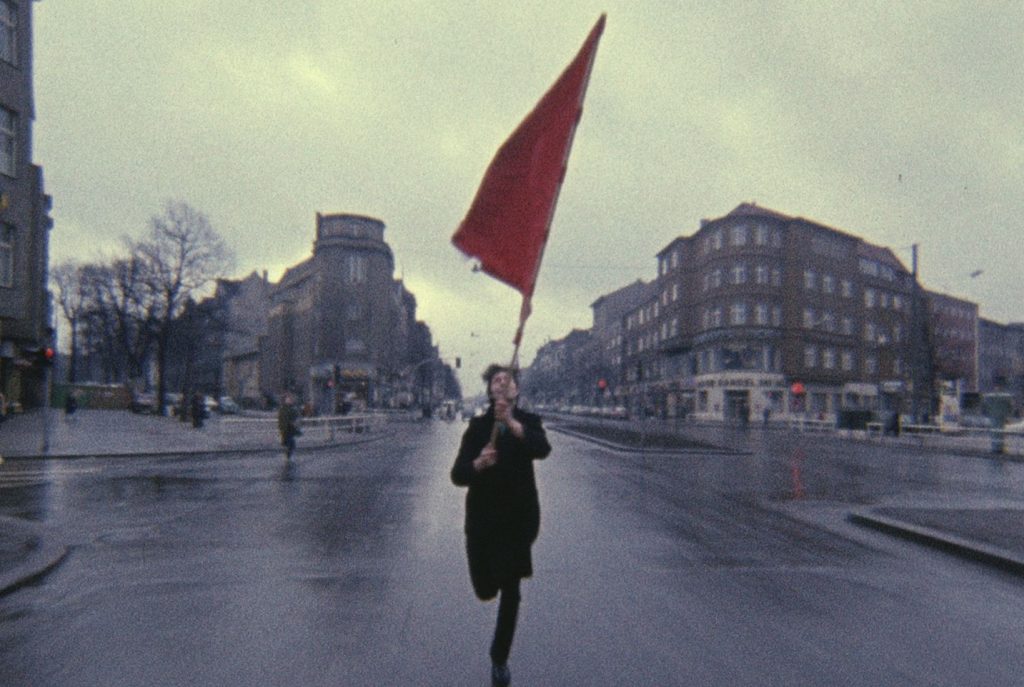16mm – The Great Small Gauge 2019

Programma curated by Mariann Lewinsky, Sarah Neely and Karl Wratschko
Film history would look completely different without small-gauge films. Much of independent filmmaking, amateur and experimental cinema simply would not exist. Contemporary artists still work with the unique potential of 8mm, Super8mm, 16mm and Super16mm, and the magical impact of Bella e perduta (Lost and Beautiful, 2015) by Pietro Marcello or Lazzaro felice (Happy as Lazzaro, 2018) by Alice Rohrwacher is partly due to the fact that they were shot on Super16mm. However nowadays, analogue small-gauge formats are often used just to record images before digitising them for editing and distribution. Even in the archival world small-gauge films are routinely digitised and shown digitally – see the (excellent) digital restoration of Echte Clichés by Eric de Kuyper in the Recovered and Restored section. To see 16mm film in a 16mm projection has become a rare experience, to put it mildly. We want to make that experience available to an audience not only interested in the content of a film but also having a notion of cinema as a visual art bound to its material and its form of presentation.
The films we present were made between the 1930s and the 2000s, and the larger part of them are by female filmmakers, who it seems had to work with the cheaper small-gauge film formats more often than their male colleagues. Three of the artists have strong connections to other art forms: Margaret Tait to poetry, Maria Lassnig to painting and Martha Colburn to music. Maria Lassnig and Martha Colburn come from different generations and have developed highly individual styles in animation film, but there are deep ties between their works through their shared involvement with feminism, sexuality and pop culture. Margaret Tait focused mainly on the people and places she was familiar with and her ‘film poems’ are characterised by breathtaking moments of intimacy. Here the unique potential of filmmaking with small-gauge cameras becomes evident.
Berlin 1936 by Jean Vivié, Pierre Boyer, Farbtest. Die rote Fahne by Gerd Conradt and Images of Asian Music (A Diary from Life 1973-74) by Peter Hutton represent three typical genres of 16mm film production: amateur film, student filmmaking and experimental cinema. They deal openly or implicitly with the political/ideological forces that dominated the 20th century: imperialism, fascism and communism.
Reality interfered with our project. Some films were not available in 16mm prints and Calypso by Margaret Tait turned out to have been originally created not on 16mm but out of 35mm found footage. However, in the section dedicated to Georges Franju two films will be screened in 16mm, En passant par la Lorraine and Theatre national populaire.
Mariann Levinsky and Karl Wratschko
Program
Sunday 23/06/2019
16:30
Cinema Lumiere - Sala Officinema/Mastroianni
1899 AT THE STUDIO IN ASNIÈRES / CATS AMORE / LA VAGABONDE
1899 AT THE STUDIO IN ASNIÈRES / CATS AMORE / LA VAGABONDE
Mariann Lewinsky and Didier Bertrand
John Sweeney
Monday 24/06/2019
16:30
Cinema Lumiere - Sala Officinema/Mastroianni
16mm: Margaret Tait / 1899: a battue
16mm: Margaret Tait / 1899: a battue
Sarah Neely (Margaret Tait 100) and Karl Wratschko
Stephen Horne
Tuesday 25/06/2019
11:00
Presentation of Jean Vivié, his career, his works and what brought him to the creation of the “Film Archives Service” in 1968-69
Presentation of Jean Vivié, his career, his works and what brought him to the creation of the “Film Archives Service” in 1968-69
Tuesday 25/06/2019
17:15
Cinema Lumiere - Sala Officinema/Mastroianni
16mm / Le grand Méliès / L’affaire Dreyfus
16mm / Le grand Méliès / L’affaire Dreyfus
Stephen Horne
Tuesday 25/06/2019
19:00
Cinema Lumiere - Sala Officinema/Mastroianni
Calypso / Echte Clichés / Deuil en 24 heures
Calypso / Echte Clichés / Deuil en 24 heures
Wednesday 26/06/2019
11:00
Cinema Lumiere - Sala Officinema/Mastroianni
1919: DITJA CUŽOGO, REVOLUTION / 16mm: FLECK ON THE FLAG
1919: DITJA CUŽOGO, REVOLUTION / 16mm: FLECK ON THE FLAG
Peter Bagrov
Stephen Horne and drums accompaniment by Frank Bockius for Waarschuwing tegen de revolutie, [Die bolschewistischen Greuel vom 21.8.1919 oder Kiews Schreckenstage], Jön az öcsém, Extra-Ausgabe der Messter-Woche
Wednesday 26/06/2019
18:00
Cinema Lumiere - Sala Officinema/Mastroianni
POUR DON CARLOS / SELFPORTRAIT
POUR DON CARLOS / SELFPORTRAIT
Francesca Bozzano (Cinémathèque de Toulouse), Celine Ruivo (Cinémathèque française), Rob Byrne (San Francisco Silent Film Festival)
Maud Nelissen and drums accompaniment by Frank Bockius
Friday 28/06/2019
22:15
Cinema Lumiere - Sala Officinema/Mastroianni
16mm: Lassnig, Tait and… surprise in technicolor vintage!
16mm: Lassnig, Tait and… surprise in technicolor vintage!
Three short films in 16mm by Margaret Tait and Maria Lassnig followed by a great 1969 cult-movie in a 16mm technicolor vintage print. You are all cordially invited. Free entrance and free exit!


